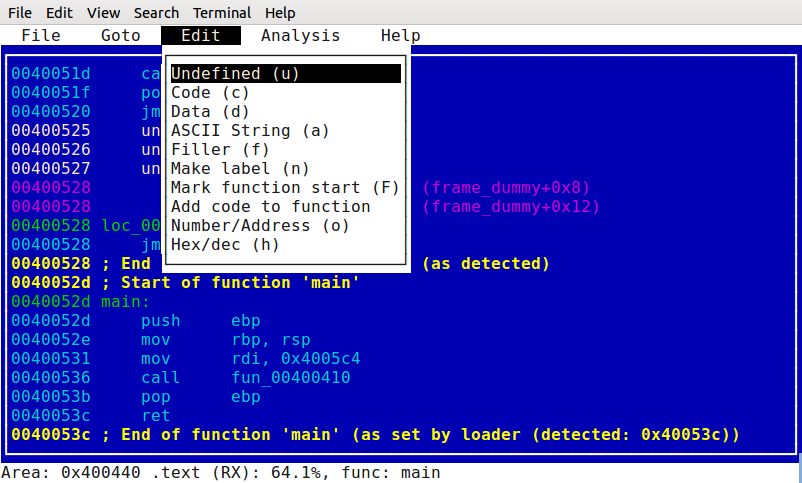ScratchABit
ScratchABit is an interactive incremental disassembler with data/control flow analysis capabilities. ScratchABit is dedicated to the efforts of the OpenSource reverse engineering community (reverse engineering to produce OpenSource drivers/firmware for hardware not properly supported by vendors).
ScratchABit supports well-known in the community IDAPython API to write disassembly/extension modules.
ScratchABit is a work in progress, features are added on as needed basis, contributions are welcome.
ScratchABit is released under the terms of GNU General Public License v3 (GPLv3).
Requirements/manifesto
Should not be written in an obfuscated language. These includes languages which are too low-level, which allow to access non-initialized variables, which don't differentiate between variables and functions/procedures, which start array indexes from arbitrary numbers, etc., etc. ScratchABit is written in Python (modern version, Python3) for your pleasure and sanity.
User interface framework should allow user interaction of the needed level, not add dependencies, bloat, issues, and incompatibilities between framework's versions. ScratchABit currently uses simple (no color even) full-screen text user interface, using ANSI/VT100 terminal escape sequences (yes, even curses library was deemed too bloat a dependency to force upon users).
Should leverage easy to use text formats to store "database", to facilitate easy reuse and tool writing, and storage in version control systems.
Quick start
To use ScratchABit, you need Python3 installed and VT100 (minimum) or XTerm (recommended) terminal or terminal emulator (any Unix system should be compliant, like Linux/BSD/etc, see also FAQ).
Clone the code using:
git clone --recursive
If you cloned code without --recursive, run git submodule update --init.
If you want to disassemble a file in self-describing executable format
(like ELF), just pass it as an argument to scratchabit.py. The repository
includes example-elf (x86 32bit) for quick start:
python3 scratchabit.py example-elf
Alternatively, if you want to disassemble a raw binary file, you need to creat a .def (definition) file, to specify what memory areas are defined for the code, where to load binary file, etc. The repository includes a simple x86_64 raw binary code, and corresponding .def file:
python3 scratchabit.py example.def
Press F1 if in doubt what to do next.
Using Plugins
IDAPython processor plugins can be loaded from anywhere on the Python module path. Alternatively, you can symlink the plugin .py file into the plugins/cpu subdirectory.
After the plugin is made available, create a new definition file based on example.def that sets the plugin module name in the 'cpu xxx' line.
For a very simple example that uses an external plugin, see this esp8266.def file that works with the xtensa.py file from the ida-xtensa repository.
TODO/Things to decide
Currently uses multiple files for "database", each storing particular type of information. Switch to a single YAML file instead?- Add color (low priority, (unbloated!) patches welcome).
- Few important UI commands to implement yet for comfortable work.
- Offer to save DB on quit if modified.
- Git integration for DB saving.
Improve robustness (add exception handler at the main loop level, don't abort the application, show to user/log and continue).- Try to deal with code flow inconsistencies (e.g. within an instruction
- low priority for intended usage) and data access inconsistencies (e.g. accessing individual bytes of previosly detected word - higher priority).
- See how to support other types of IDAPython plugins besides just processor modules.
- Parse and use debugging information (e.g. DWARF) present in ELF (etc.) files.
FAQ
Q: What processors/architectures are supported?
A: ScratchABit doesn't support any processor architectures on its own, it is fully retargettable using IDAPython API plugins. Many plugins are available, writing a new plugin is easy. To let users test-drive ScratchABit, a very simple (!) X86 processor plugin is included in the distribution, using Pymsasid disassembler under the hood.
Q: I'm not on Linux, how can I run ScratchABit?
A: Install Linux in an emulator/VM on your system and rejoice.
Q: Mandatory screenshot?
A: Sure:
